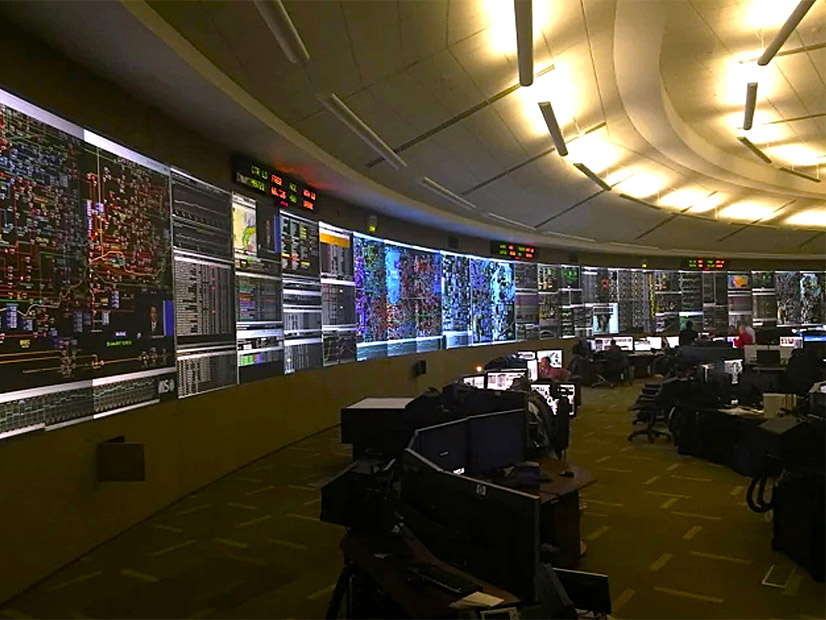INDIANAPOLIS — Stakeholders appear wary of MISO’s proposed, availability-based accreditation method that it plans to file with FERC by the end of the year for the RTO’s approximately 12 GW of load-modifying resources (LMRs).
MISO wants to accredit LMRs based on past performance levels by the 2028/29 planning year. It would split them into two categories — those that can respond in 30 minutes or less and those that can’t — and accredit them accordingly. (See MISO Proposes to Split LMR Participation, Accreditation into Fast/Slow Groups.)
The LMR Type II category would have a maximum response time of 30 minutes and presumed availability for all maximum generation emergency step 2 events. An LMR Type I class would carry a maximum response time of six hours and be called up earlier, when MISO declares a maximum generation alert. The RTO has long said it needs to be able to access LMRs outside of actual emergency declarations.
MISO plans to use a similar accreditation to its proposed, availability-based method for its more traditional generation resources. However, to measure demand response, MISO said it would use backward-looking meter data from hours when capacity advisory declarations are in place to accredit resources. The RTO plans to draw on data from a minimum of 65 historical hours per season over the past year and will give more weight in accreditation to performance during hours when capacity advisories escalate into maximum generation events, alerts or warnings.
The RTO would cap accreditation at an LMR’s maximum stated capability during registration and reduce accreditation when LMR owners submit inaccurate availability information. Currently, MISO does not tie the accuracy of LMR availability data to accreditation values.
During a Sept. 23 stakeholder workshop, WPPI Energy’s Steve Leovy said he was concerned that the sample size of hours during which capacity advisories are in effect is too small to be a good indicator of LMR performance. He said MISO’s capacity advisories seem too infrequent to use as a basis for accreditation.
Other stakeholders said one year’s worth of data might not be adequate to create a stable, year-to-year accreditation. They pointed out that a particularly heat wave-laden or mild summer could skew the numbers, especially for those LMRs tied to air conditioning loads.
MISO said it will turn to other previous years as needed if the past season doesn’t have the requisite 65 hours. Joshua Schabla, an economist in MISO’s market design group, also said the RTO intends to account for temperature-based adjustments in the accreditation.
MISO said it needs the split classification because its long-lead-time LMRs are incapable of deploying in the time it takes for emergencies to materialize. The RTO experiences maximum generation alerts most frequently, with 20 occurring between 2020 and 2023, compared to 10 warnings, four maximum generation emergency step 1 events and five maximum generation emergency step 2 events in the same time frame.
“Resources that deploy earlier can be used effectively, even if the event escalates quickly,” Schabla said. “In practice, we need these long-lead resources to be called up during maximum generation alerts.”
MidAmerican Energy’s Dennis Kimm asked for more nuance beyond the two capability classes. He said MidAmerican has several LMRs that can respond within two hours but none that are ready within 30 minutes. Leovy advocated for the 30-minute requirement to be bumped up to a two-hour response time.
Schabla said LMRs are more highly accredited than any other in its resource stack, yet the LMRs are less available than any other in its resource stack. “There’s a fundamental disconnect here.”
Though MISO officially has about 12 GW of LMRs, staff have said MISO receives only about 7 GW to 8 GW worth of movement during emergencies.
Schabla said the gap does not necessarily mean LMR owners are doing anything wrong or gaming the system. He said it likely represents a “misalignment between what is accredited and what is available.”
In August, Reliability Subcommittee Chair Ray McCausland called the LMR response rate “eye-opening” and “a huge concern.”
The RTO currently has an “inability to access many of the megawatts available in a useful time frame,” Executive Director of Market and Grid Strategy Zak Joundi said at MISO Board Week this month. The inability is magnified by the fact that MISO currently must declare an emergency before gaining access to load adjustments, he said.
“We want to make sure [that] if someone is clearing the Planning Resource Auction, we can access those resources and they can deliver,” Joundi said.
Joundi acknowledged to board members that stakeholders were dissatisfied with MISO’s timeline.
“Ultimately, we want to make sure the rules we file at FERC are effective,” Joundi said. “Our goal is not necessarily to discourage the megawatts that are important. We want to make sure there are megawatts that we can leverage under the circumstances that we do.”
MISO will again discuss LMR accreditation with stakeholders at its Oct. 9 Resource Adequacy Subcommittee meeting.



